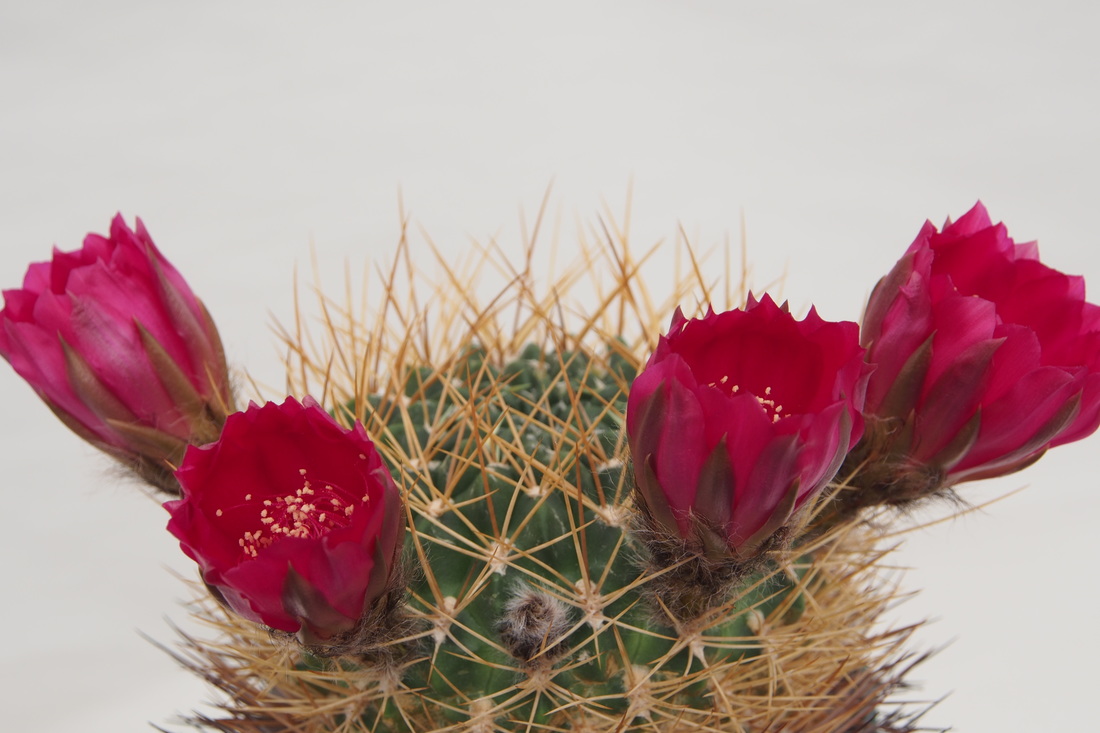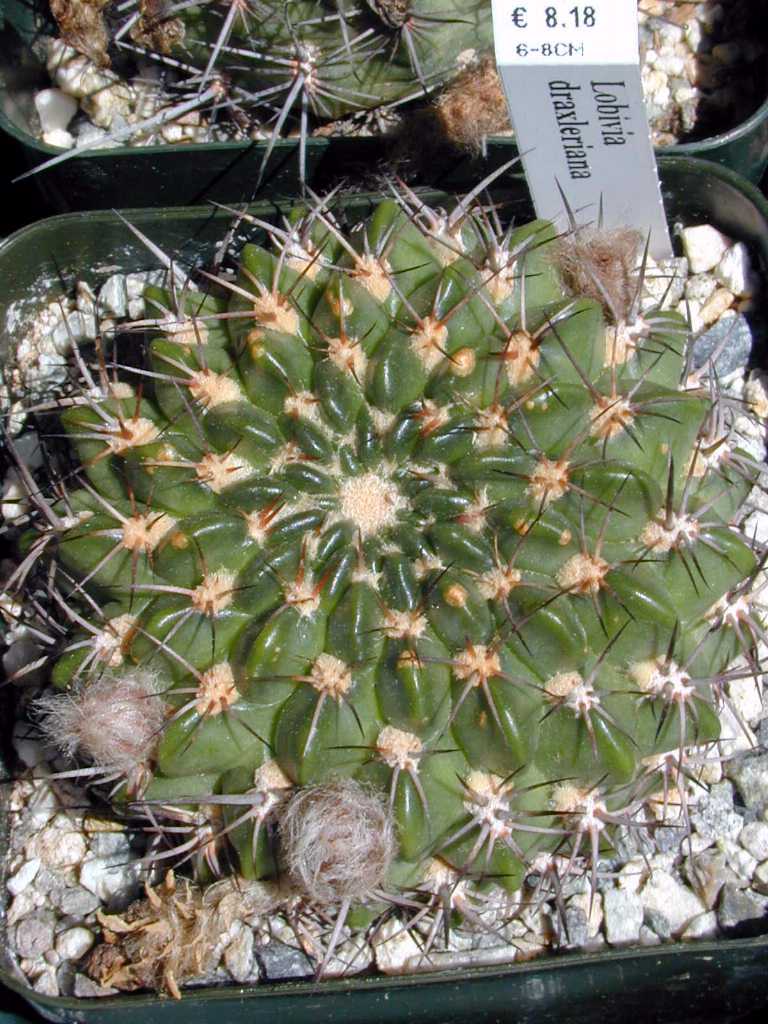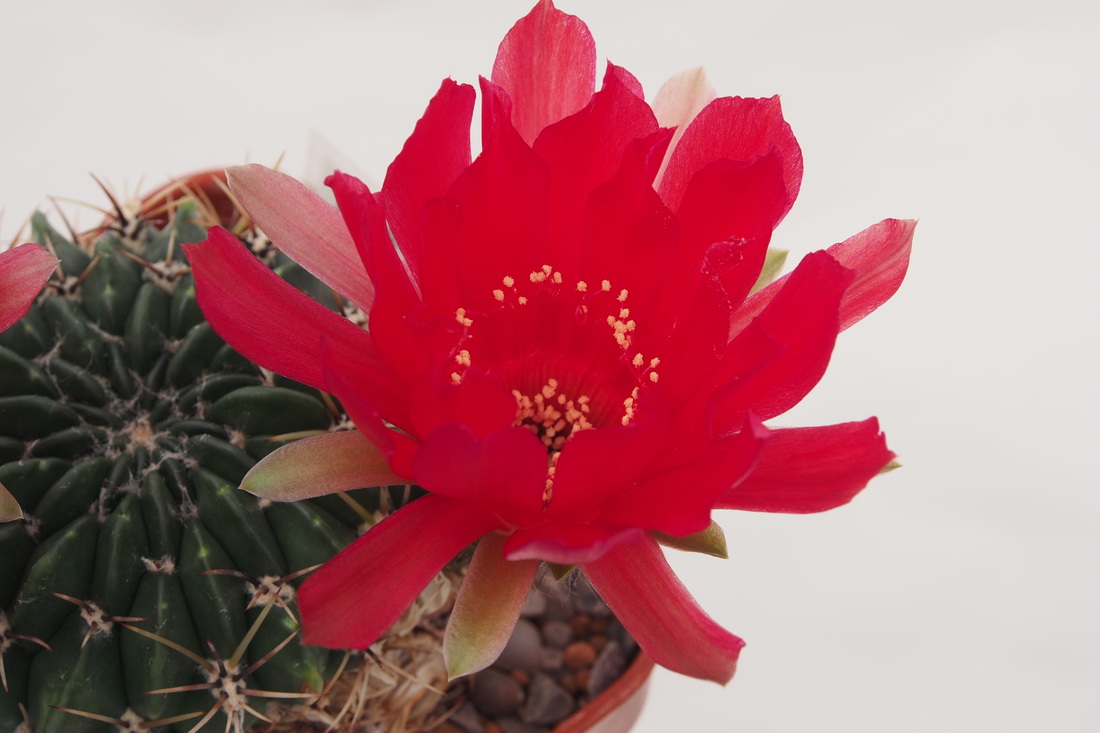Lobivia cinnabarina is a species of cactus first described in 1885.
Description
Lobivia cinnabarina grows singly with flattened, spherical, bright green shoots that reach a diameter of up to 15 centimetres (5.9 in). The shoot apex is depressed and not thorny. There are around 20 irregular and crooked ribs, which are clearly divided into crooked cusps. The two to three central spines are slightly curved. The eight to twelve slender marginal spines are slightly curved and 0.6 centimetres (0.24 in) to 1.2 centimetres (0.47 in) long.
The bell-shaped, funnel-shaped scarlet flowers appear on the side or on the shoot shoulder and open during the day. They reach a diameter of up to 4 centimetres (1.6 in).
Distribution
Lobivia cinnabarina is widespread in the Bolivian departments of Cochabamba, Potosí and Chuquisaca, in the Andes at elevations between 2500 and 3400 meters.
Taxonomy
The first description as Echinocactus cinnabarinus by William Jackson Hooker was published in 1847. The specific epithet cinnabarina comes from Latin, means 'vermilion red' and refers to the color of the flowers. Nathaniel Lord Britton and Joseph Nelson Rose placed the species in the genus Lobivia in 1922. Other nomenclature synonyms include Echinopsis cinnabarina (Hook.) Labor. (1853), Echinocereus cinnabarinus (Hook.) K.Schum. (1894) and Cinnabarinea cinnabarina (Hook.) Frič ex F.Ritter (1980). In addition, numerous taxonomic synonyms are known because the species is very variable.
References
External links
- Media related to Lobivia cinnabarina at Wikimedia Commons
- Data related to Lobivia cinnabarina at Wikispecies




